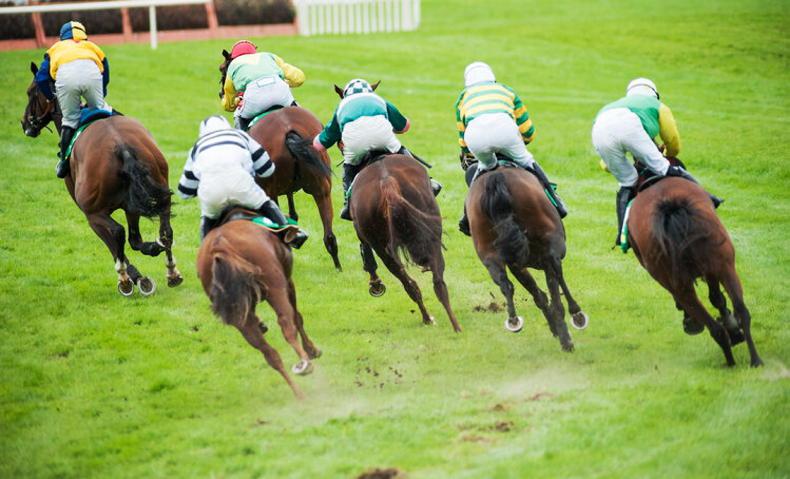YOUNG horses often develop asymmetrically, and this creates weak areas in the body. Changing undesirable posture into a functional one not only helps relieve physical discomfort but encourages more efficient body and brain use. Whilst they may appear to be willing, back and core muscles are still developing. To ensure symmetry, it is relevant that appropriate muscles are strengthened and conditioned.
Young horses experience inconsistent and awkward growth and development stages. From an early age, a right/left preference develops. Repetition of constant weight-bearing will make muscles on this preferred side become more developed and stronger. The imbalance will generate fatigue, an apparent decline in performance and an increased risk of injury.
The most efficient horse has a range of motion in the forehand that corresponds to the range of motion in the hindquarters; but not all horses have strides that match. Thoroughbreds have specific conformational traits to help with stretch and length of stride.
Hindquarters
In racing, the burst of acceleration the horse needs to push out of the stalls causes hindquarter muscles to become hypertonic and tight. Rather than engaging the hindquarters to push forward, the racehorse uses its neck to pull the rest of the body forwards. This results in a heavy forehand and typically the horse is weaker around the back and hindquarters. Locomotor muscles become weak because of the focus on stamina and speed.
Tension in shoulders
A large percentage of overall body weight is carried by the shoulder. Saddle load is concentrated over the withers, which is especially sensitive to pressure, a problem exacerbated by the rider standing in the stirrups. Gaits can become uneven and the length of stride correspondingly shorter. Tension in shoulders and withers is often linked to tension in the neck and back. Horses will lack impulsion from behind since the shoulders need to be free for hind limb engagement. If this is not treated, it can lead to soft tissue strain and lameness.
Propulsive forces
Large superficial muscles of the hindquarters provide the propulsive forces required for speed. Hindquarters become imbalanced because of the need for quick power to push from the starting stalls. Neurological communication to the hind end is limited compared to muscles in the front which makes it difficult for the horse to be aware of muscles it is using in the hind end.
If there is discomfort, lack of balance, poor conformation or injury, the horse easily compensates by overusing other muscles. Compensatory patterns in the hindquarters place stress further up the spine, compromising the sacroiliac (SI), ligaments and tendons, subsequently overloading the forelimbs predisposing further injury.
As hindquarters are incorrectly used the hamstring muscle group becomes over-developed (hypertonic) to help balance the body. Through this lack of development gluteal muscles atrophy (weaken). The absence of strength in the pelvic structure and the dysfunction of deep stabilising muscles often triggers postural and performance problems. Teaching the horse to use its core stabilises and supports the pelvic region by helping the horse use lumbar muscles more appropriately.
The horse’s spine governs the overall co-ordination of limbs and gait. The combination of weak and over tight muscles can cause a deviation in posture and in the skeletal system. Tightness through the back influences the horse’s ability to bend and can greatly affect hind limb movement and neck posture, while incorrect positioning of the head and neck can restrict breathing and result in airway disorders.
Connective tissues in this area directly attach to the front and hind legs which mean any tension here will cause short and stiff strides. Movement of the soft palate because of a fixed head/neck set will also make breathing difficult. Massage and cranio-sacral techniques can offset these issues.
Treating posture
Horses will continue to move and perform with muscle strains or spasms but, during exercise, these small spasms recruit more fibres until increased discomfort begins to affect posture, gait, attitude and performance. Restrictions will continue until the horse receives appropriate bodywork.
To practically assess whether the horse is functioning as it should, I look at key areas to build up the ultimate picture. Observing static and dynamic postural observations, movement analysis, examining muscle recruitment patterns and evaluating joint range movement, allow me to bring all elements together; pain, function, balance and posture.
These sequences are repeated until I feel comfortable that the posture exhibited is consistent. Addressing postural and biomechanical dysfunction easily helps to identify common physical one-sidedness. Behaviour and postural changes may signal an insignificant or temporary issue or may indicate the first signs of a serious injury.
Therapeutic interventions are natural, drug-free and allow the opportunity to palpate and isolate areas that have become tight, imbalanced, sore, or restricted through training. Thorough palpation of the horse’s superficial muscles assesses temperature, texture, tenderness, and tension across the body when looking for muscular dysfunctions. This differentiates the areas that need focus.
Trigger points are very common and using deeper palpation we find muscle soreness within muscle groups rather than in isolated areas and within the fascia, the body’s entire connective tissue. Blood flow and circulation are automatically improved when there is more space for blood, oxygen, nutrients and water to transport to the cells throughout the horse’s body. All these common performance-limiting issues are preventable and treatable, with correct therapy administered at the right time.


 This is a subscriber-only article
This is a subscriber-only article
 It looks like you're browsing in private mode
It looks like you're browsing in private mode






SHARING OPTIONS: